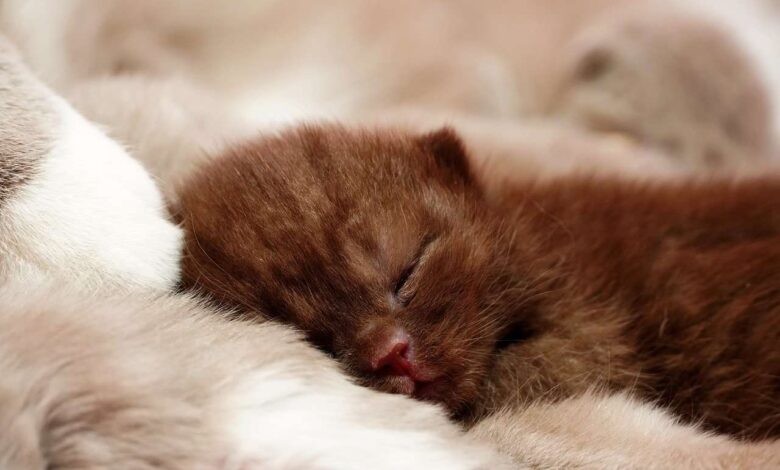
Raising a kitten can be an incredibly rewarding experience, but it also comes with its own set of challenges. Proper training is essential for building a strong bond with your feline friend and ensuring a well-behaved companion.
In this guide, we’ll delve into the fundamentals of kitten training, providing practical tips and expert advice to help you raise a happy and obedient cat. From socialization and litter box training to scratching post training and behavior modification, we’ll cover everything you need to know to get started.
Let’s embark on this journey together and create a lifetime of memories with your new furry family member.
Table of contents
- Kitten Training Made Easy: Tips for New Pet Owners
- The Importance of Early Socialization
- Litter Box Training: A Must-Know Skill
- Scratching Post Training: Protecting Your Furniture
- Kitten Biting: How to Stop It
- Kitten Play: Essential for Mental Stimulation
- Positive Reinforcement: The Key to Success
- Consistency is Key: The Importance of Routine
- Hiring a Professional Trainer: When to Seek Help
- Success Stories: Kitten Training Triumphs
- Celebrating the Journey of Kitten Training
- Frequently Asked Questions (FAQ) About Kitten Training
Kitten Training Made Easy: Tips for New Pet Owners
Welcoming a new kitten into your home is a thrilling experience. These little furballs are full of energy, curiosity, and the potential to become cherished members of your family. However, alongside the joy of bringing home a kitten comes the responsibility of ensuring they are properly trained. Training your kitten early not only makes your life easier but also sets your kitten up for a happy, well-adjusted life. This comprehensive guide will walk you through the essential aspects of kitten training, offering practical tips, real-life examples, and valuable online resources to help you along the way.
The Importance of Early Socialization
Why Socialization Matters
Socialization is one of the most critical aspects of kitten training, and it should begin as early as possible. During the first few weeks of life, kittens go through a sensitive period where they are particularly receptive to learning about their environment. This period, typically between 3 and 14 weeks of age, is when kittens form their most lasting impressions about the world around them. If a kitten is well-socialized during this time, they are more likely to grow into a confident and sociable adult cat. On the other hand, a lack of socialization can lead to fearfulness, aggression, and other behavioral issues later in life.
Socialization involves exposing your kitten to a variety of experiences, including meeting new people, encountering other animals, hearing different sounds, and exploring various environments. The goal is to ensure that your kitten perceives these experiences as positive and non-threatening.
Steps for Effective Socialization
1. Start Early: Begin socialization as soon as you bring your kitten home. This is especially important if your kitten did not receive much socialization during the first few weeks of life.
2. Introduce New People: Allow your kitten to meet different people, including children, adults, and elderly individuals. Ensure that these interactions are gentle and positive. Encourage visitors to offer your kitten treats, which helps to create positive associations.
3. Exposure to Other Animals: If you have other pets, introduce them to your kitten gradually. Start with brief, supervised encounters and gradually increase the time they spend together. If your kitten seems frightened, give them space and try again later.
4. Environmental Enrichment: Expose your kitten to various environments within your home. Allow them to explore different rooms, surfaces, and objects. This helps them become accustomed to different settings and reduces the likelihood of fear in new situations.
5. Sound Desensitization: Introduce your kitten to common household sounds, such as the vacuum cleaner, doorbell, and television. Start with low volumes and gradually increase the sound level as your kitten becomes more comfortable.
6. Handling Practice: Regularly handle your kitten, touching their paws, ears, and mouth. This helps them become accustomed to being handled, which is important for grooming and veterinary visits.
7. Positive Reinforcement: Reward your kitten with treats, praise, and affection whenever they respond positively to a new experience. This reinforces their confidence and encourages them to explore further.
Real-Life Example: Bella’s Socialization Success
Bella, a young kitten adopted by the Johnson family, was initially shy and fearful of new people. However, the family made it a priority to socialize Bella early. They invited friends over regularly, introduced her to their dog slowly, and provided plenty of opportunities for Bella to explore her new home. Within a few weeks, Bella became a confident and playful kitten who enjoyed meeting new people and exploring new environments. Her early socialization laid the foundation for a well-adjusted adult cat.
Additional Resources for Socialization
- ASPCA: Socializing Your Cat
- The Humane Society: Socialization Tips
Litter Box Training: A Must-Know Skill
The Importance of Litter Box Training
Litter box training is one of the first and most important skills your kitten needs to learn. Proper litter box habits are essential for maintaining a clean and comfortable home. Fortunately, most kittens have an instinctual drive to bury their waste, making litter box training relatively straightforward. However, it’s essential to approach this task with patience and consistency to ensure success.
Steps for Successful Litter Box Training
1. Choose the Right Litter Box: Start by selecting a litter box that is appropriately sized for your kitten. It should be shallow enough for them to easily enter and exit but large enough to accommodate their growth. Some kittens prefer open litter boxes, while others may feel more secure with a covered option. You may need to experiment to find out what your kitten prefers.
2. Select the Right Litter: Kittens can be particular about the type of litter they use. Clumping litter is often preferred by pet owners because it makes cleaning easier, but some kittens might prefer non-clumping or even natural, unscented litter. It’s a good idea to start with a basic, unscented litter and switch gradually if you need to.
3. Proper Placement: Place the litter box in a quiet, accessible location where your kitten can use it without feeling threatened or disturbed. Avoid placing the litter box near their food and water, as cats naturally prefer to eliminate away from their eating area.
4. Introduction to the Litter Box: As soon as you bring your kitten home, place them in the litter box and let them explore it. Gently scratch the surface of the litter to show them what it’s for. Most kittens will quickly understand the purpose of the litter box.
5. Reinforcement: If your kitten uses the litter box correctly, praise them and offer a small treat. Positive reinforcement encourages them to continue this behavior.
6. Monitoring and Cleaning: Keep the litter box clean by scooping it daily and changing the litter regularly. Cats are fastidious animals, and a dirty litter box may discourage them from using it. If you notice any signs of litter box avoidance, such as urinating outside the box, it’s important to address the issue promptly.
7. Addressing Accidents: If your kitten has an accident outside the litter box, clean the area thoroughly to remove any scent that might encourage repeat behavior. Never punish your kitten for accidents, as this can create fear and anxiety around litter box use.
Real-Life Example: Max’s Litter Box Journey
Max, a playful tabby kitten, initially struggled with litter box training. He would occasionally urinate in different corners of the house, leaving his owners frustrated. After consulting with their veterinarian, Max’s owners realized that his litter box was too small and placed in a high-traffic area. They upgraded to a larger box and moved it to a quieter location. With a little patience and positive reinforcement, Max quickly got the hang of using the litter box consistently.
Additional Resources for Litter Box Training
- American Veterinary Medical Association: Litter Box Training
- Petfinder: Litter Box Problems and Solutions
Scratching Post Training: Protecting Your Furniture
Understanding the Need to Scratch
Scratching is a natural and essential behavior for cats. It helps them to keep their claws sharp, mark their territory, and stretch their muscles. However, this behavior can become problematic if your kitten starts scratching your furniture, carpets, or other household items. Training your kitten to use a scratching post is crucial to protect your belongings while allowing them to fulfill their instinctual need to scratch.
Choosing the Right Scratching Post
1. Material: Scratching posts come in various materials, including sisal, carpet, and wood. Sisal is often preferred because it is durable and provides good resistance, which cats enjoy. Some kittens may also enjoy scratching on corrugated cardboard.
2. Height and Stability: The scratching post should be tall enough for your kitten to fully stretch out when using it. Additionally, it must be stable and sturdy to prevent it from tipping over, which could frighten your kitten and discourage them from using it.
3. Placement: Place the scratching post in an area where your kitten likes to scratch or near their favorite resting spot. Cats often like to stretch and scratch when they wake up, so placing a post near their bed can be effective.
Training Your Kitten to Use a Scratching Post
1. Introduce the Scratching Post: When you first bring the scratching post home, encourage your kitten to investigate it. You can do this by placing their paws on the post or gently running your fingers along the material to attract their attention. Some kittens may take to it immediately, while others may need a bit more encouragement.
2. Use Catnip: Sprinkling a small amount of catnip on the scratching post can entice your kitten to use it. The scent of catnip is highly appealing to most cats and can make the scratching post more attractive than your furniture.
3. Positive Reinforcement: Whenever you see your kitten using the scratching post, reward them with treats, praise, or playtime. This positive reinforcement helps reinforce the desired behavior.
4. Redirect Unwanted Scratching: If your kitten starts scratching something inappropriate, calmly redirect them to the scratching post. Never punish your kitten for scratching, as this can create anxiety and may lead to further behavioral issues.
5. Provide Multiple Options: Consider offering multiple scratching posts or pads around your home, especially if your kitten has a preference for scratching in specific areas. This gives them the opportunity to scratch in appropriate places throughout the house.
Real-Life Example: Luna’s Furniture-Saving Scratching Success
Luna, a mischievous kitten, had a habit of scratching her owner’s brand-new leather sofa. After trying various deterrents with
limited success, Luna’s owner decided to invest in a tall, sturdy sisal scratching post. They placed it near the sofa and sprinkled some catnip on it. With consistent redirection and positive reinforcement, Luna began using the scratching post exclusively, saving the sofa from further damage.
Additional Resources for Scratching Post Training
- Jackson Galaxy: Scratching 101
- Best Friends Animal Society: Understanding Cat Scratching
Kitten Biting: How to Stop It
Why Kittens Bite
Kittens often bite as part of their natural play behavior. In the wild, biting is a crucial skill that helps them learn how to hunt and defend themselves. However, when kittens bite humans, it can quickly become a problematic behavior if not addressed early. It’s important to understand why kittens bite and how to redirect this behavior in a positive way.
Steps to Prevent Kitten Biting
1. Understand the Triggers: Kittens may bite for several reasons, including teething, play, or fear. Identifying the cause of the biting behavior is the first step in addressing it.
2. Provide Appropriate Toys: Encourage your kitten to bite and chew on appropriate toys rather than your hands or feet. Toys that mimic prey, such as wand toys or stuffed mice, are ideal for satisfying your kitten’s natural hunting instincts.
3. Avoid Using Your Hands as Toys: Never use your hands or fingers as playthings for your kitten. This can reinforce the idea that biting is acceptable. Instead, always use toys to interact with your kitten.
4. Teach Bite Inhibition: If your kitten bites during play, immediately stop the interaction and withdraw your attention. This teaches them that biting leads to the end of playtime, which is something they want to avoid. Resume play after a short pause, using a toy instead of your hand.
5. Redirect Aggressive Behavior: If your kitten becomes overly aggressive during play, try redirecting their energy to a different activity, such as chasing a ball or climbing a cat tree. This can help channel their excitement into a more appropriate outlet.
6. Provide Plenty of Physical and Mental Stimulation: Ensure your kitten is getting enough exercise and mental stimulation to prevent boredom, which can lead to biting out of frustration.
Real-Life Example: Oliver’s Journey to Gentle Play
Oliver, a spirited kitten, loved to play rough, often biting his owner’s hands during play sessions. His owner realized that this behavior needed to be addressed before it became a bigger problem. They introduced a variety of interactive toys and consistently stopped playtime whenever Oliver bit too hard. Over time, Oliver learned that gentle play resulted in more fun, while biting led to the end of the game.
Additional Resources for Stopping Kitten Biting
- The Humane Society: How to Stop Kitten Biting
- PetMD: Understanding Kitten Biting
Kitten Play: Essential for Mental Stimulation
The Role of Play in Kitten Development
Play is not just about fun for kittens; it’s a crucial aspect of their development. Through play, kittens learn important skills such as hunting, problem-solving, and social interaction. Play also provides essential mental stimulation, helping to keep your kitten’s mind sharp and engaged. Regular playtime is key to preventing boredom and destructive behaviors, making it an integral part of your kitten’s daily routine.
Types of Play and Toys
1. Interactive Play: Interactive play involves you directly engaging with your kitten using toys. Wand toys, laser pointers, and feather teasers are great for this type of play. These toys allow your kitten to chase and pounce, mimicking the hunting experience.
2. Solo Play: It’s also important to provide toys that your kitten can play with on their own. Balls, stuffed mice, and puzzle toys can keep your kitten entertained when you’re not available. Puzzle toys, in particular, are excellent for providing mental stimulation.
3. Climbing and Exploration: Kittens love to climb and explore. Providing cat trees, shelves, and tunnels can satisfy their natural curiosity and desire to be in high places. This not only offers physical exercise but also helps to enrich their environment.
4. Social Play: If you have more than one kitten or other pets, social play becomes an essential part of their interaction. Wrestling and chasing games between kittens help them learn bite inhibition and social boundaries.
Creating a Play Routine
1. Schedule Regular Play Sessions: Aim for at least two to three play sessions per day, each lasting 10-15 minutes. This helps to burn off energy and keeps your kitten mentally stimulated.
2. Vary the Toys: Rotate your kitten’s toys regularly to keep their interest. Introducing new toys or changing up the play routine can prevent boredom and keep your kitten engaged.
3. Include Enrichment Activities: Beyond play, enrichment activities such as hiding treats around the house or using food-dispensing toys can provide additional mental stimulation.
4. Observe Your Kitten’s Preferences: Pay attention to the types of play and toys your kitten enjoys most. Some kittens may prefer chasing games, while others might enjoy climbing or puzzle-solving activities.
Real-Life Example: Charlie’s Enrichment Routine
Charlie, an energetic Siamese kitten, needed a lot of mental and physical stimulation to stay happy and well-behaved. His owner created a daily routine that included interactive play with a feather wand, solo play with puzzle toys, and exploration time on a multi-level cat tree. This routine kept Charlie entertained and prevented any unwanted behaviors, such as scratching furniture or excessive meowing.
Additional Resources for Kitten Play and Enrichment
- RSPCA: Enriching Your Cat’s Life
- International Cat Care: Play and Exercise for Your Cat
Positive Reinforcement: The Key to Success
Understanding Positive Reinforcement
Positive reinforcement is a powerful training tool that involves rewarding your kitten for desired behaviors. By associating good behavior with positive outcomes, such as treats, praise, or playtime, you can encourage your kitten to repeat those behaviors. This method is not only effective but also helps to build a strong bond between you and your kitten based on trust and mutual respect.
How to Use Positive Reinforcement
1. Identify Desired Behaviors: Start by identifying the behaviors you want to reinforce, such as using the litter box, scratching the post, or coming when called.
2. Choose Rewards: Select rewards that your kitten finds highly motivating. This could be small treats, verbal praise, petting, or a favorite toy. The key is to find something that your kitten really enjoys.
3. Timing is Everything: For positive reinforcement to be effective, timing is crucial. Reward your kitten immediately after they perform the desired behavior so they can make the connection between the action and the reward.
4. Be Consistent: Consistency is key to successful positive reinforcement. Make sure to reward the desired behavior every time it occurs, especially in the early stages of training.
5. Gradually Reduce Rewards: As your kitten becomes more consistent with the desired behavior, you can gradually reduce the frequency of rewards. Eventually, the behavior will become a habit, and your kitten will perform it even without a reward.
6. Avoid Punishment: Punishment can create fear and anxiety in your kitten, which can lead to more behavioral issues. Positive reinforcement is a more humane and effective approach to training.
Real-Life Example: Daisy’s Positive Reinforcement Success
Daisy, a playful calico kitten, had a tendency to jump on the kitchen counter, a behavior her owner wanted to discourage. Instead of scolding Daisy, her owner decided to use positive reinforcement. They started by rewarding Daisy with treats and praise whenever she stayed on the floor. Over time, Daisy learned that staying off the counter resulted in positive outcomes, and the behavior gradually diminished.
Additional Resources for Positive Reinforcement Training
- American Society for the Prevention of Cruelty to Animals (ASPCA): Cat Behavior and Training
- The Humane Society: Positive Reinforcement Techniques
Consistency is Key: The Importance of Routine
The Role of Routine in Kitten Training
Kittens, like all animals, thrive on routine. Establishing a consistent daily schedule for feeding, playtime, and training helps your kitten feel secure and understand what is expected of them. A predictable routine also reduces stress and makes it easier for your kitten to learn and adapt to new behaviors.
Creating a Daily Routine
1. Feeding Schedule: Establish regular feeding times each day. Consistency in feeding helps regulate your kitten’s digestion and prevents overeating. It also creates a routine that your kitten can anticipate.
2. Play and Exercise: Schedule regular play sessions at the same times each day. This not only provides physical exercise but also helps to prevent boredom and behavioral issues.
3. Training Sessions: Incorporate short training sessions into your daily routine. These can be focused on litter box training, using the scratching post, or practicing basic commands like “come” or “sit.”
4. Sleep Schedule: Kittens need plenty of rest, so it’s important to establish a consistent sleep schedule. Ensure your kitten has a comfortable and quiet place to sleep undisturbed.
5. Gradual Changes: If you need to make changes to
your kitten’s routine, do so gradually. Sudden changes can cause stress and confusion, making it harder for your kitten to adapt.
Real-Life Example: Milo’s Structured Day
Milo, a young Bengal kitten, had a lot of energy and sometimes displayed behavioral issues like biting and scratching. His owner realized that establishing a routine could help. They set up a daily schedule that included specific times for feeding, play, and training. This structure helped Milo feel more secure and reduced his problem behaviors, making him a happier and more well-behaved kitten.
Additional Resources for Creating a Kitten Routine
- PetMD: The Importance of Routine for Your Cat
- International Cat Care: Establishing a Routine
Hiring a Professional Trainer: When to Seek Help
Understanding When Professional Help is Needed
While many kitten training tasks can be handled by pet owners, there are situations where seeking the help of a professional trainer may be beneficial. Professional trainers bring expertise, experience, and an objective perspective that can be invaluable in addressing specific behavioral issues or achieving training goals more efficiently.
Some common scenarios where a professional trainer might be necessary include:
- Persistent Behavioral Problems: If your kitten continues to exhibit unwanted behaviors despite your best efforts—such as persistent biting, scratching, or litter box issues—a professional trainer can provide targeted strategies to correct these behaviors.
- Aggression: Aggressive behavior in kittens can be challenging to manage and may require specialized techniques that a professional trainer is equipped to provide. Early intervention can prevent aggression from becoming a long-term problem.
- Fear and Anxiety: If your kitten displays signs of fear or anxiety, such as hiding, hissing, or avoiding social interaction, a trainer with experience in feline behavior can help your kitten overcome these challenges and build confidence.
- Advanced Training Goals: For pet owners who wish to teach their kitten advanced tricks or commands, or for those preparing their kitten for participation in shows or competitions, a professional trainer can offer the expertise needed to achieve these goals.
- Time Constraints: If you have a busy schedule and find it difficult to dedicate the necessary time to consistent training, a professional trainer can assist by providing regular sessions and guidance.
How to Choose the Right Trainer
Selecting the right professional trainer is crucial to ensuring that your kitten receives the best possible care and training. Here are some tips for choosing a qualified trainer:
- Experience and Qualifications: Look for a trainer with specific experience in working with cats and kittens. While many trainers specialize in dogs, feline training requires a different approach. A trainer certified by organizations such as the International Association of Animal Behavior Consultants (IAABC) or who has extensive experience with cats is ideal.
- Training Methods: Ensure the trainer uses positive reinforcement techniques. Avoid trainers who rely on punishment or aversive methods, as these can harm your kitten’s well-being and lead to more behavioral issues.
- Reputation and Reviews: Check reviews and ask for references from previous clients. A reputable trainer should have a history of successful outcomes and satisfied clients.
- Personal Connection: Arrange a meeting with the trainer to discuss your kitten’s needs and observe their interaction with your pet. A good trainer should be patient, communicative, and show a genuine understanding of feline behavior.
Real-Life Example: Bella’s Transformation
Bella, a rescue kitten, was shy and fearful, often hiding under furniture and avoiding human contact. Her new owner, despite their best efforts, found it challenging to help Bella feel comfortable and confident in her new home. They decided to hire a professional trainer who specialized in working with shy and anxious cats.
The trainer developed a customized program for Bella, which included gradually increasing her exposure to new environments, using positive reinforcement to reward brave behavior, and teaching her owner how to create a safe and welcoming space. Over several weeks, Bella’s behavior began to improve. She started venturing out more, engaging in play, and bonding with her owner. The professional guidance made a significant difference in Bella’s adjustment and overall happiness.
Additional Resources for Hiring a Professional Trainer
- IAABC: Find a Certified Behavior Consultant
- Association of Professional Dog Trainers (APDT): How to Choose a Dog Trainer (Applicable to Cats as well)
Success Stories: Kitten Training Triumphs
Celebrating Kitten Training Successes
Training a kitten can sometimes feel overwhelming, but with persistence, patience, and the right approach, the results can be incredibly rewarding. Many pet owners have successfully trained their kittens to overcome challenging behaviors and develop into well-mannered, confident adult cats. Sharing these success stories not only inspires other pet owners but also highlights the effectiveness of positive reinforcement and consistent training.
Case Study 1: Max’s Journey from Feral to Friendly
Max was found as a stray kitten, living in a feral colony. When he was brought into a home, he was understandably fearful of humans and would hiss and scratch when approached. His new owner knew that Max needed special attention to help him adjust to life as a domesticated cat.
Using a combination of positive reinforcement, patience, and gradual socialization, Max’s owner began working with him daily. They started by sitting quietly near Max’s hiding spots, offering treats without making eye contact. Slowly, Max began to trust his owner, inching closer over time.
After several months, Max transformed into a loving and affectionate cat who enjoyed sitting on his owner’s lap and purring contentedly. His journey from a fearful feral kitten to a friendly and socialized cat is a testament to the power of compassionate training.
Case Study 2: Luna’s Litter Box Success
Luna, a young Siamese kitten, struggled with litter box training when she first arrived at her new home. Despite her owner’s best efforts, Luna frequently had accidents outside the box, leading to frustration and concern.
Determined to help Luna succeed, her owner sought advice from online resources and implemented a structured approach to litter box training. They placed multiple litter boxes in different locations, cleaned them regularly, and praised Luna whenever she used the box correctly.
Consistency and positive reinforcement paid off, and within a few weeks, Luna was using the litter box reliably. Her owner’s dedication to understanding Luna’s needs and creating a supportive environment made all the difference.
Case Study 3: Simba’s Scratching Post Training
Simba, a lively Bengal kitten, had a strong instinct to scratch—unfortunately, his chosen target was the living room sofa. His owner tried covering the sofa with a protective cover, but Simba continued to scratch through it.
After researching the issue, Simba’s owner purchased several types of scratching posts and experimented to find the one Simba liked best. They also used catnip to entice Simba to the posts and rewarded him with treats and praise whenever he used them.
Simba quickly learned that scratching the post was far more rewarding than scratching the sofa. His owner’s proactive approach and willingness to try different solutions ultimately led to a positive outcome.
Additional Resources for Kitten Training Success Stories
- Petfinder: Cat Training Success Stories
- The Kitten Lady: Success Stories
Celebrating the Journey of Kitten Training
Kitten training is a journey that requires patience, dedication, and a deep understanding of your pet’s unique personality and needs. By embracing positive reinforcement, consistency, and professional help when needed, you can guide your kitten through this critical developmental stage with success.
Whether it’s teaching your kitten to use the litter box, stopping unwanted biting, or simply encouraging playful interaction, every small victory is a step toward a stronger bond and a happier life together. Celebrate your successes, learn from your challenges, and remember that every kitten has the potential to become a well-behaved, loving companion with the right guidance.
Training a kitten may seem like a daunting task, but with patience, consistency, and the right approach, it can be a rewarding experience for both you and your furry friend. By focusing on early socialization, litter box training, scratching post use, preventing biting, encouraging play, and using positive reinforcement, you can help your kitten develop into a well-behaved and happy adult cat.
Remember that every kitten is unique, and what works for one may not work for another. Be patient, observe your kitten’s behavior, and adjust your training methods as needed. With time and effort, you’ll build a strong bond with your kitten and enjoy a lifetime of companionship.
This guide has provided a comprehensive overview of the key aspects of kitten training, complete with practical tips, real-life examples, and valuable resources. By following these guidelines, you’ll be well on your way to raising a well-trained, happy, and healthy kitten.
Frequently Asked Questions (FAQ) About Kitten Training
How long does it take to train a kitten?
Training a kitten can vary in duration depending on the specific behaviors you’re working on and your kitten’s temperament. Basic training, such as litter box usage and responding to their name, can often be achieved within a few weeks if done consistently. More complex behaviors, such as using a scratching post exclusively or learning tricks, may take several months. Patience and consistency are key. Every kitten is different, so while some may pick up on training quickly, others may require more time and repetition.
Resources:
- PetMD: How Long Does It Take to Train a Cat?
- ASPCA: Cat Behavior FAQ
What should I do if my kitten isn’t using the litter box?
If your kitten isn’t using the litter box, it’s essential to troubleshoot the issue immediately. Ensure that the litter box is clean and placed in a quiet, easily accessible location. The type of litter you’re using can also be a factor—some kittens prefer certain textures or scents. If your kitten is still having accidents, consider adding more litter boxes in different locations or trying a different litter. If the problem persists, consult a veterinarian to rule out any health issues.
Resources:
- The Humane Society: Litter Box Problems
- Petfinder: Cat Litter Box Training
How can I stop my kitten from biting?
Kitten biting is a common issue, often a result of play aggression or teething. To stop your kitten from biting, redirect their attention to toys whenever they start to bite. Avoid using your hands or feet as playthings, as this encourages biting. If your kitten bites during play, stop the interaction immediately and ignore them for a few moments. This teaches them that biting results in the end of fun. Consistency in this approach is vital.
Resources:
- The Spruce Pets: How to Stop Kitten Biting
- PetMD: How to Stop a Kitten from Biting
What’s the best way to introduce my kitten to other pets?
Introducing a new kitten to other pets in the household should be done gradually and with care. Start by allowing your pets to get used to each other’s scents before any face-to-face interaction. This can be done by exchanging bedding or rubbing a towel on each pet and then allowing the other to sniff it. When it’s time for them to meet, keep the first interactions short and supervised. Use positive reinforcement, such as treats and praise, to reward calm and non-aggressive behavior. Always ensure each pet has its own space to retreat to if needed.
Resources:
- ASPCA: Introducing Cats to Other Pets
- Petfinder: How to Introduce Your New Cat to Other Pets
How can I train my kitten to use a scratching post instead of furniture?
Training your kitten to use a scratching post instead of furniture involves making the scratching post more appealing and accessible than your furniture. Place the scratching post near the furniture your kitten likes to scratch and use catnip to attract them to it. Whenever your kitten uses the scratching post, reward them with treats and praise. If your kitten starts scratching furniture, gently redirect them to the post. Over time, your kitten will associate the scratching post with positive experiences.
Resources:
- PetMD: How to Stop Cats from Scratching Furniture
- American Humane: Cat Scratching Behavior
Is it okay to punish my kitten if they misbehave?
Punishing a kitten is generally not recommended, as it can lead to fear, anxiety, and even more behavioral problems. Instead of punishment, focus on positive reinforcement by rewarding good behavior with treats, praise, and affection. If your kitten misbehaves, such as scratching or biting, calmly redirect their attention to a more appropriate behavior or toy. Consistent positive reinforcement is far more effective in shaping your kitten’s behavior than punishment.
Resources:
- ASPCA: Positive Reinforcement Training for Cats
- The Humane Society: Understanding Your Cat’s Behavior
What are the most important socialization steps for my kitten?
Early socialization is crucial for a kitten’s development. Start by exposing your kitten to a variety of people, environments, and gentle handling to help them become well-adjusted adults. Gradually introduce them to new experiences, such as car rides, different sounds, and other animals, in a controlled manner. Always ensure these experiences are positive by offering treats and affection. Early socialization can prevent behavioral problems and make your kitten more adaptable.
Resources:
- Kitten Lady: The Importance of Kitten Socialization
- Petfinder: Socializing Your Kitten
How much time should I spend playing with my kitten each day?
Playtime is essential for a kitten’s physical and mental health. Aim to spend at least 20-30 minutes a day engaging in active play with your kitten. Use interactive toys, such as feather wands or laser pointers, to simulate hunting behaviors and keep your kitten mentally stimulated. Play sessions should be spread throughout the day to prevent boredom and encourage exercise. Playtime also strengthens the bond between you and your kitten.
Resources:
- The Spruce Pets: How Much Playtime Does Your Cat Need?
- PetMD: How to Play with a Cat
When should I start training my kitten?
You can start training your kitten as early as 8 weeks old. At this age, kittens are receptive to learning and are naturally curious, making it an ideal time to begin basic training such as litter box use, name recognition, and gentle handling. Early training helps establish good habits and makes it easier to teach more complex behaviors as your kitten grows. Remember to keep training sessions short and fun to maintain your kitten’s interest.
Resources:
- Petfinder: Training Your Kitten
- Kitten Lady: Kitten Training 101
How do I know if my kitten is ready for more advanced training?
Your kitten is ready for more advanced training when they consistently respond to basic commands, such as coming when called or using the litter box without issue. Signs of readiness include a willingness to engage in training sessions, a longer attention span, and a positive response to rewards. Advanced training can include teaching tricks, leash training, or even clicker training. Always progress at your kitten’s pace and continue using positive reinforcement.
Resources:
- The Spruce Pets: Clicker Training for Cats
- Catster: How to Train Your Cat







